Research projects describe the role of red meat in the Australian diet, including nutritional value of popular cuts, popular meals, portion sizes and core ingredients and contribution to nutrient intake and diet goals.
Studies include retail surveys and nutrient composition studies [1-13], secondary analyses of national nutrition surveys [14-21], qualitative and quantitative surveys of popular meals and practices [22-29].
Australian consumption: 3 to 4 times per week
Three to four times per week is a practical guide about eating recommended amounts of lean red meat in the Australian diet.
- Australians eat red meat in a variety of meals, 3 to 4 times per week with portion sizes ranging from 70g to 160g, cooked weight (17, 19).
- Typical portion sizes for popular meals range from ~70g-90g (cooked) or 100g-125g (raw weight) for meals such as pasta to ~105g (cooked) or 150g (raw weight) for meals such as stir fry or curry; to ~160g (cooked) or 200- 250g (raw weight) for meals such as steak [13,19].
- Average per capita intake of red meat in the Australian diet has remained stable at around 57-59g per day [17,18] and is consistent with the 65g per day, cooked and lean meat recommended in the Australian Dietary Guidelines to meet limiting nutrients, iron and zinc [31].
- Typical consumption, three to four times per week, provides recommended amounts per week i.e., 455g cooked and 650g raw weight [31]. For example, a 250g steak, 125g lean mince for pasta, 150g strips for stir fry and a 125g steak for salad [13].
Balanced meals: meat & 3+ vegetables
Three to four balanced meals per week is a practical guide about eating recommended amounts of red meat and boosting low intake of vegetables in the Australian diet.
- There is a positive association between red meat and vegetable consumption in Australia because Australians typically eat red meat with vegetables in a variety of evening meals [14,16,19,20,27-29,30].
- Evening meals are mostly home prepared and typically planned around three core ingredients [19, 22-25]:
- a variety of popular animal protein foods
- 3 or more non-starchy vegetables
- Potato or grain food or other starchy vegetable
Lean red meat: a popular choice
Lean beef and lamb are popular choices in the Australian diet and important sources of long chain omega-3s, protein, iron and zinc in the Australian diet and their consumption contributes to 10% of total intake of energy, 13% of fat and 12% of saturated fat [15,17].
- Popular cuts include lean mince, steaks, casserole cuts, chops, roasts, diced meat and strips [13].
- Lean red meat is widely available with little differences by state, region or socio-economic suburbs [9]. Lean beef mince is a popular choice representing around 50% of beef mince sold in Australia [10].
- Meat is either purchased lean or trimmed of separable fat by consumers during meal preparation. Almost three quarters of Australians eat beef and lamb cuts either lean or semi-trimmed with almost 65% eating lean beef and lamb [13].
- Predominantly grass-fed with low levels of marbling, lean cuts of Australian beef have 3% fat with 1% saturated fat. Whether grass-fed or grain-finished, once trimmed of separable fat, the nutrition benefits of different cuts of Australian beef and lamb are the same.
- When trimmed of separable fat, all lean cuts, including lean mince, are sources of 12 nutrients, including iron, zinc, protein, long chain omega-3s, B vitamins [B12, 6,5,3,2] and minerals (selenium, magnesium, phosphorous). Any variations between cuts are within the expected range of natural variability (13).
